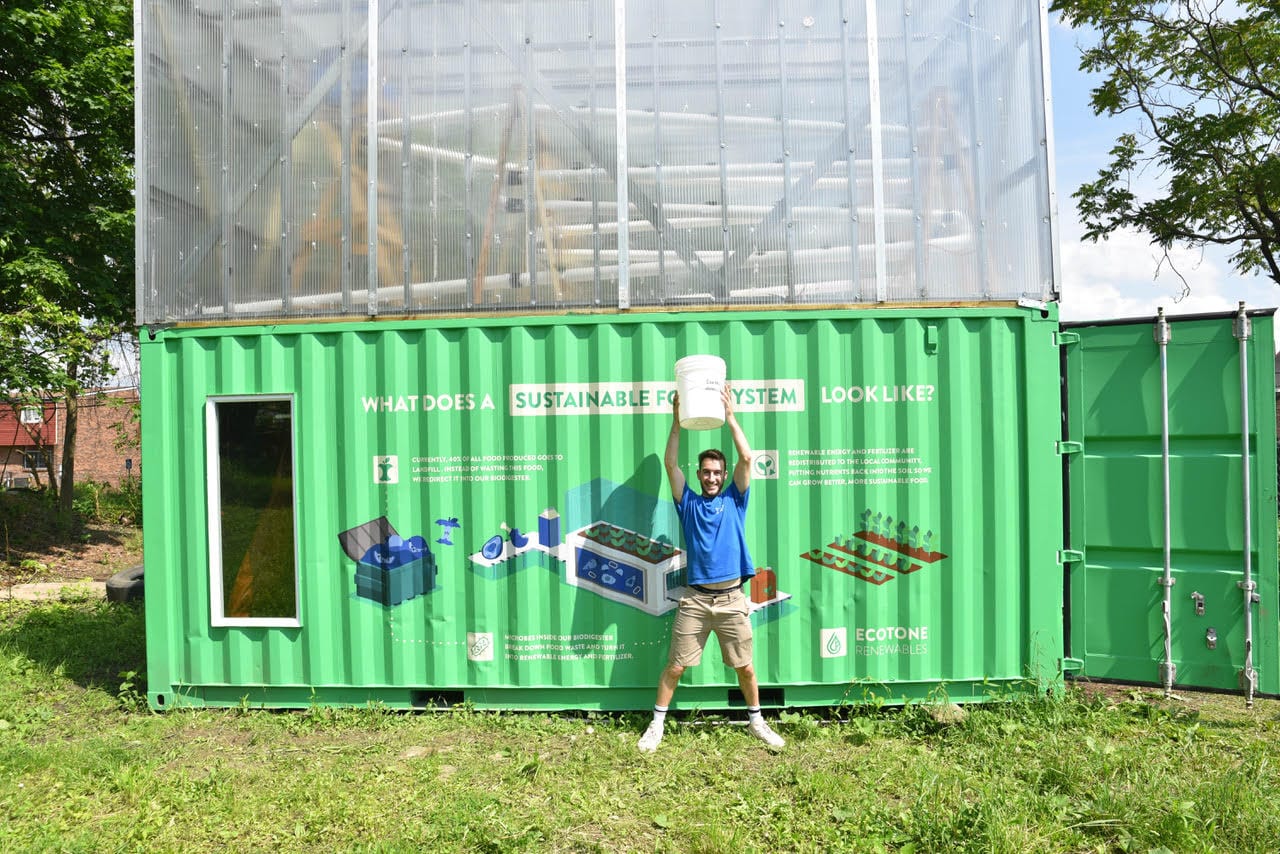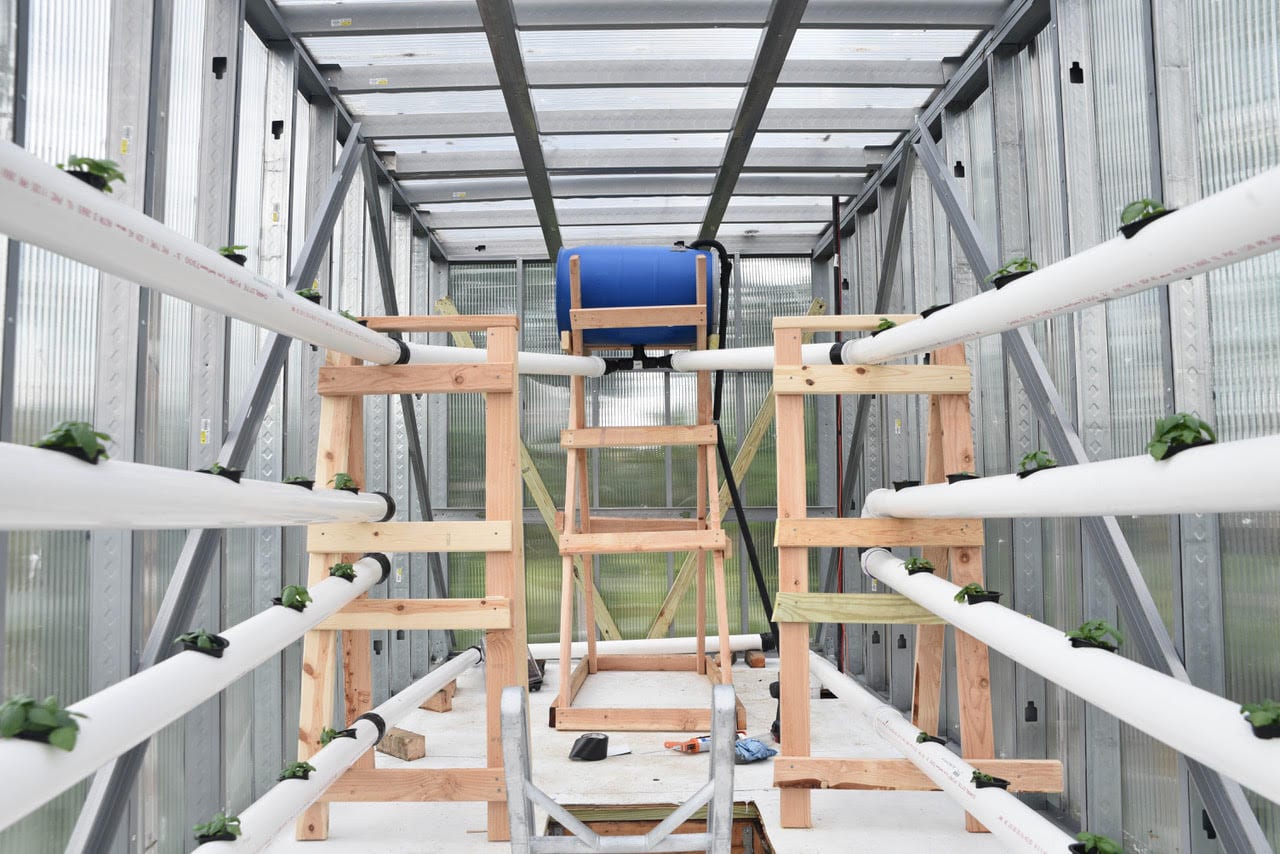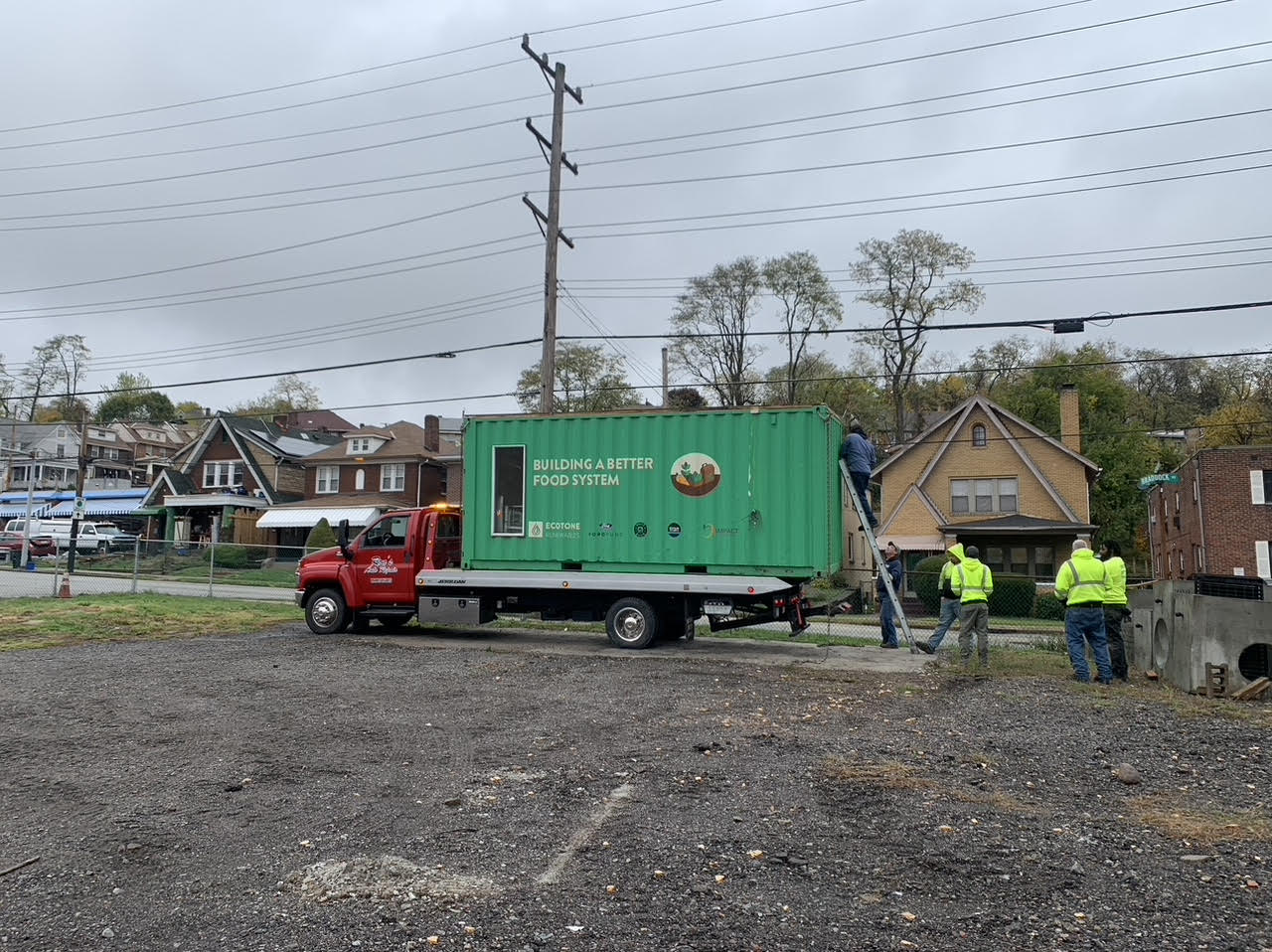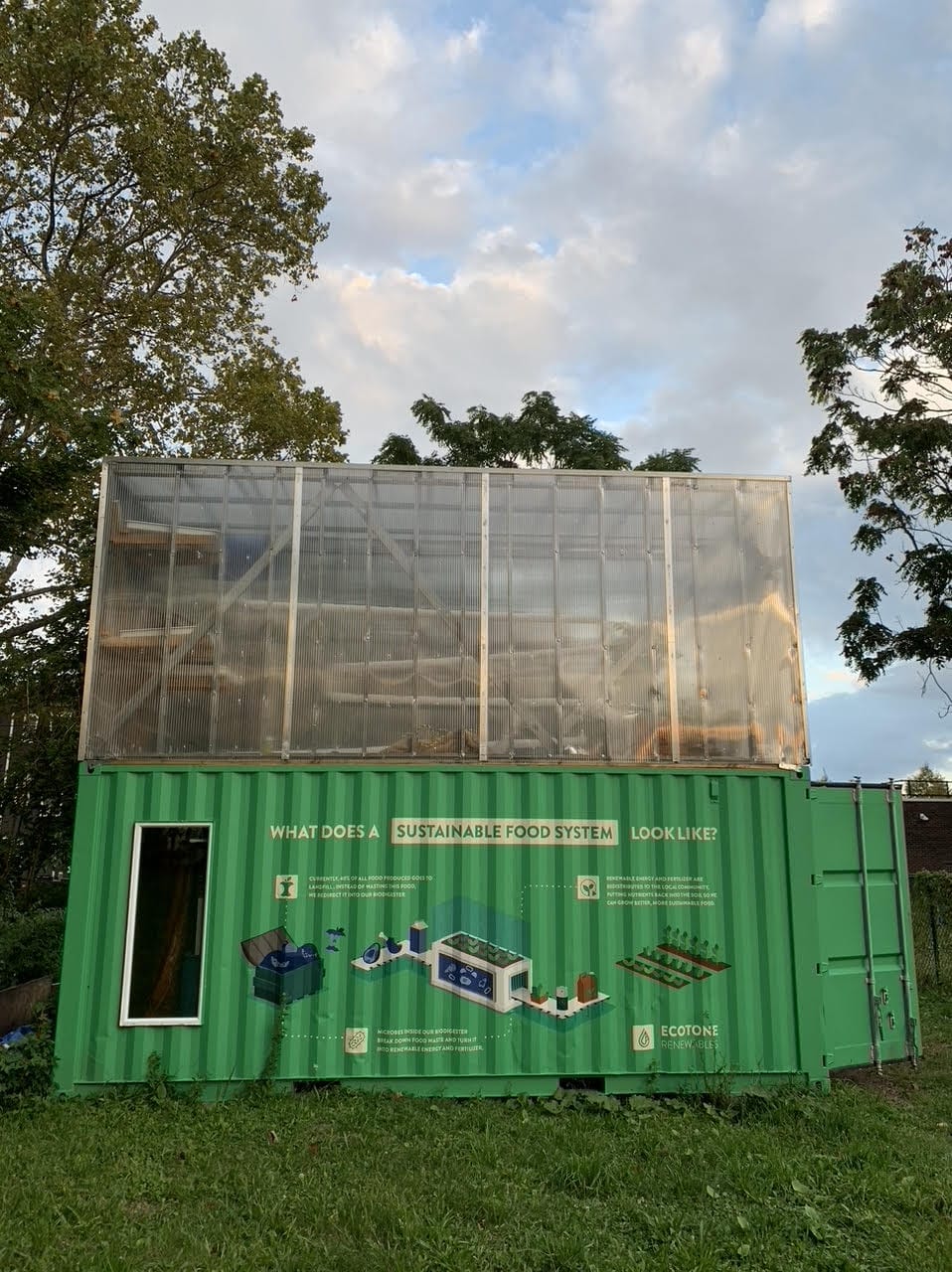
Ecotone Renewables Seahorse System Tackles Food Waste in Pittsburgh
By Amanda Waltz
November 11, 2020
Swissvale has a new resident, and it's ready to clean up the Pittsburgh borough's food waste.
At the end of October, Swissvale officially adopted the Ecotone Renewables Seahorse, a greenhouse and fertilizer system created by a group of Carnegie Mellon University (CMU) graduate students. Now located behind theSwissvale borough building, the Seahorse will serve as a green disposal system for the estimated 12 tons of food waste generated by Swissvale businesses, municipal government, and residents every year.
The system is expected to serve a variety of purposes, including creating nutrient-dense fertilizer for Swissvale's community gardens, and growing herbs and produce to donate to groups like 412 Food Rescue, an area nonprofit that saves surplus food from restaurants, supermarkets, and other businesses and reroutes it to populations in need.
But how does the system, described as an “anaerobic digester,” work?
“It's kind of like a cow stomach,” says Dylan Lew, a CMU graduate student and head of Ecotone Renewables. He describes how the system grinds up food waste into “a pretty gross smoothie” that is then broken down by bacteria and microbes. The system then converts that into either liquid fertilizer or methane gas that can then be used as a source of renewable energy.
Lew estimates that the Seahorse produces around 1000-7000 kilowatt-hours a year. “It's not an immense amount of electricity, but it helps run the system.”
On its website, Ecotone Renewables states that the company hopes to combat food waste by making sustainable food and agriculture systems “more accessible and prevalent outside the industrial scale.” The company also offers contactless compost pickups in several Pittsburgh neighborhoods, through which it accepts produce, grains, and cooked meats.
The arrangement with Swissvale allows Lew and his fellow team members, Kyle Wyche, Robert Davis, and Elliott Bennett, to test the Seahorse, currently a two-story prototype able to fit in a 10-by-20-foot shipping container. Over time, they plan on making improvements to the system, such as adding solar panels.
Swissvale Borough Council president and attorney, Abigail Salisbury, saw the system, which previously resided in East Liberty, as an opportunity to bring both character and sustainability to her neighborhood.
“I thought it was a good fit because of our community and huge interest people have in gardening,” says Salisbury.
A press release states that the relocation of the Seahorse demonstrates how Salisbury and her fellow council members are working to “bring local innovators to the borough and provide a fertile environment for businesses and new ventures to incubate and grow and sustain the businesses already calling Swissvale home.”
So far, she says the Seahorse has become a welcome part of the neighborhood.
“It works pretty well,” says Salisbury. “The system apparently loves coffee grounds.”
She and Lew also view the Seahorse as a way to keep discarded food and other organic materials from ending up in landfills, where Salisbury says it never has a chance to properly decompose.
“It's packed so tightly that it just sits,” says Salisbury. “It's just landfill waste.”
Lew expands on this, claiming that food waste contributes about 8.2 percent of the total greenhouse gas emissions released into the atmosphere each year. This is due to the massive amount of food that gets thrown out; on its website, 412 Food Rescue estimates that, globally, consumers waste up to 40 percent of all food produced, translating to over 1.3 billion tons annually.
To make people more aware of the wide-reaching impact of food waste, Swissvale will offer an educational component with Seahorse, giving tours to members of the public and school groups.
While the Seahorse has only just arrived in Swissvale, Lew says, “It's been a great experience so far working with [Swissvale Borough Council], and we're excited to keep it going moving forward.”
Salisbury also hopes the system opens up other possibilities for the borough.
“We're looking for more opportunities to have more things like [the Seahorse] in Swissvale,” says Salisbury. “We have space, we are growing, and I would love to explore and have other conservations to see what other kinds of projects we can support.”




Leave A Comment